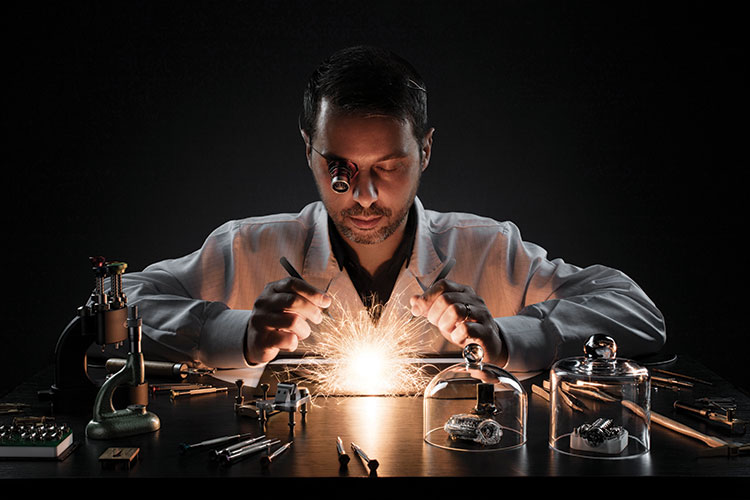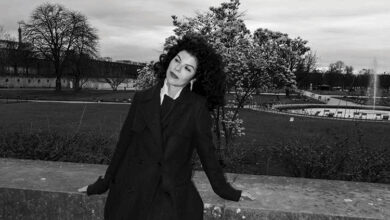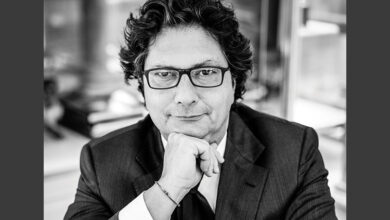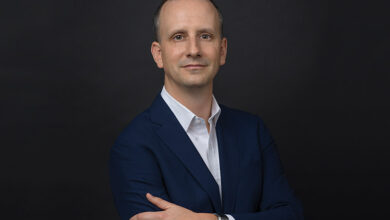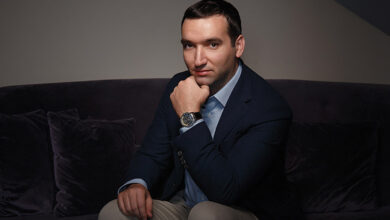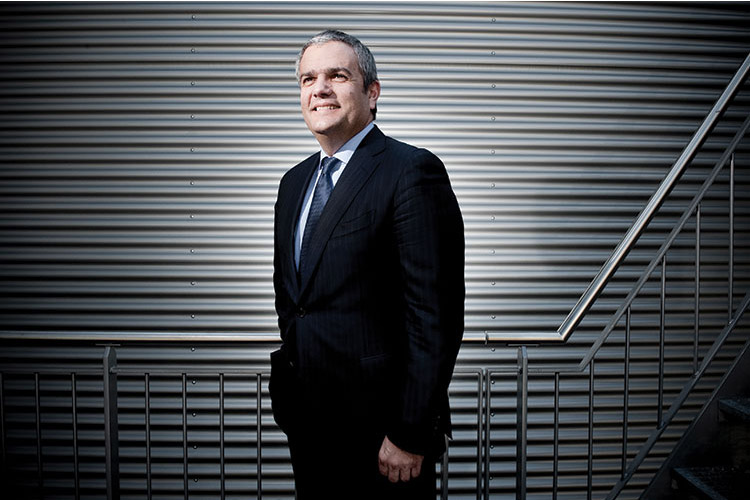
Hublot CEO Ricardo Guadalupe
Hublot CEO Ricardo Guadalupe:Haute horlogerie brand Hublot has been creating waves in numerous fields with its partnerships and collaborations.s unveiled a number of watches that are collaborations with different sports and arts.
We sat down with the CEO of Hublot, Ricardo Guadalupe, to get his take on the multiple worlds of Hublot that are now, also connected…
The first digital watch you released last year – the Big Bang Referee 2018 FIFA World Cup Russia – was a major hit; was it a one-off release or is digital watches the road Hublot will take in the future?
That is the road Hublot will take in the future, but we are not going into the digital watches business as such. It is a totally different industry from the Swiss watch industry and is happening a lot more in the Silicon Valley. But I think there is a space to fill if you come with a concept like we did with the Referee watch, with an application dedicated to the sport event, with different straps and so forth.
Next year, there is the UEFA Euro 2020; again, the referees will be wearing connected watches from Hublot. It will of course be a new watch as the technology grows quite fast, so we are working on a new watch for the Euro Cup.

Perhaps after that we would work with partnerships; perhaps a connected watch for Ferrari – a connected watch that would link with the car, for instance.
This is all in the future, and just a supposition of how we could work with concepts linked with partnerships, such as football and Ferrari, there is a possibility of doing one-shot series of connected watches. They would always be high-end, so while the module would always be electronic, we would work on cases, perhaps ceramic, or red ceramic, or rubber straps, ensuring that we deliver a perfect Hublot product, with a positioning of around $5,000-$6,000.
How does Hublot manage being active in a lot of worlds, such as football, boxing, golf, arts, and so on?
The world is always changing and today’s consumer is a multi-activity consumer – a wealthy consumer who likes buying Hublot watches. They like being involved in multiple activities, such as buying a Ferrari, attending the F1 Grand Prix, World Cup, or watching the Champions game. We are creating a multi-activity world of Hublot because it corresponds to what our consumer is doing. This is a universe of Hublot, to which when the consumer is connected, he feels he is a part of Hublot.
Football and Ferrari are our two main pillars, but we believe that they are not enough. We need to create other worlds around art, music, boxing, and cricket. We are going to be official timekeepers for the Cricket World Cup. Cricket speaks to the Indians, the Pakistanis, and the Australians. We are the first watch brand to go into cricket. The end point is attracting more consumers to come into the Hublot world.
We have an important team to manage all of these worlds; we have specific people dedicated to every partnership. It is a lot of work, but it is a key element of the success of Hublot. Our marketing investment is as much in people as in partner events; we have quite a number of people working in the events department and in the sponsorship department; we need them to manage all of this.
Hublot has been working on sapphires quite a bit; do you see a future for Hublot with sapphire?
We have always looked for new products that have a specific design and identity; you can do it by changing the design of the watch or by changing to a different material, you can get a new design. For example, the look of a watch in sapphire is totally different than the look of a watch made of ceramic or gold. People are always looking for something new, and I think we can industrialise sapphire so that we can come up with watches that are still expensive, but is actually a reasonable price today for sapphire. When a watch retails at $60,000 or $70,000, quantity is not as important. We have been able to produce more than 1,000 pieces in sapphire and we will continue being exclusive as always.
When you choose a material to be used in your Art of Fusion series, what is your criteria for testing and choosing that material?
We have a Research and Development department that is involved in fundamental research on materials. Some work on ceramic, we have worked on developing a vivid red ceramic; we are working on yellow ceramic, blue ceramic, and so on. We work on alloys such as Magic Gold. This is a long process because at the end, we must industrialise. We do all the different tests of reliability – Is it hypoallergenic? Does it break too easily? Aesthetics is an important factor; if you come up with a new material that is similar to black ceramic, it makes no sense. We already have black ceramic and that is enough. You have to come up with something new – either from the perspective of colour, or the way it looks. While aesthetics is an important factor, it is better if it has additional qualities. Ceramic not only looks good, it is unscratchable while gold scratches; we are trying to come up with gold that does not scratch. Then comes the process of testing it for days and even years in our laboratory for usage. We invest a lot in research and development – in materials, movements, and design.
In addition to the various colours of ceramic that you had introduced earlier, you launched Green ceramic in the Aerofusion Chronograph Orlinski Green Ceramic recently; is there demand for green ceramic?
Green is a segmenting colour as is red. Red is beautiful and impressive as a colour, but is more segmenting because it is not a colour you can wear easily. There is of course a demand for green, but it is black that remains the most important; after that comes white. I would say that 70 per cent of demand is for black.
How long ago did you begin to create the Classic Fusion Ferrari GT watch that you launched at Baselworld this year? And why did you choose that peculiar shape?
It was around four years ago that Mr. Flavio Manzoni, Head of the Ferrari Design Centre design team, asked me if we could work on a watch that has a totally new design, which would carry the DNA of both Hublot and Ferrari. I agreed, and they worked on four designs that they showed me two years ago. One was the Techframe Ferrari Tourbillon Chronograph, which we launched in 2017 to mark the 70 years of Ferrari. We rejected two of the other designs; this was the fourth that we decided to do. Of course, there is always some evolution and changes when you work on a design, but this could be a new classic for Hublot. They did the design, and we provided the 3-D drawings that we did in our product department.
There was a lot of back-and-forth, and we did the prototypes, and then the actual watch. The idea was to re-invent a new classic, contemporary watch; I think the result is something totally new and amazing, and something that has never been done before in our industry. It has been a few days since we released the watch here in Basel, and the response has been fantastic.
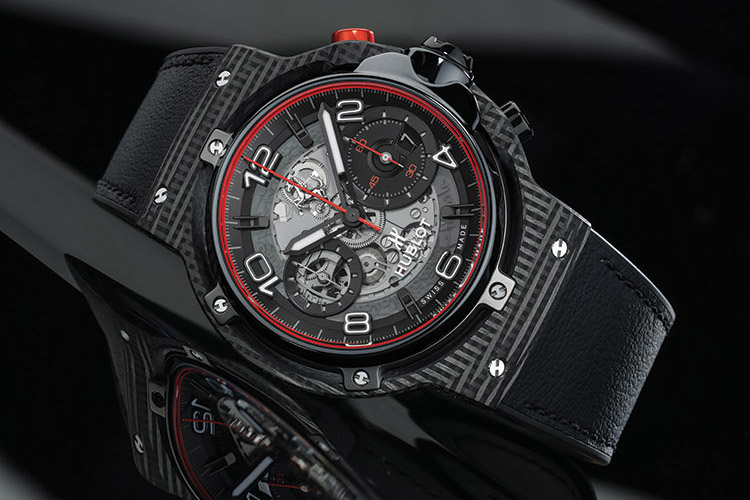
Why did you decide to make it a limited edition?
Our core range is our watches that are not limited; we are so creative that if we put everything in our core range, it will just be too big. I have to do limited editions; this means that watches appear and later disappear from our range, making way for new ones. But at the end, what we sell everyday are the Classic Fusions and some of the Big Bangs, which are the basic ones. The Ceramic Big Bang from 2005 is, till date, our bestseller. We do have our Sang Bleu and the Orlinski, and they are great talking pieces that make people dream, but at the end of the day, we sell the Classic Fusion in titanium. In the Ferrari collection, we are always going to be coming up with new models, and if they are not limited editions, I will be having 25 models in the collection, which is not very feasible.
Can you tell us a bit about the dial of the new 40mm Classic Fusion Orlinski?
We try to get inspiration not only from the watch industry but also from the arts; Sang Bleu is an artist and Orlinski is a sculptor. We did a watch for men with all those facets inspired by of his sculpture, and he said that we should do a ladies’ watch or unisex. We decided to work those facets on the dial as well, and I think the result with all those mirrors and surfaces is amazing; they are incredibly successful. We thought more of the ladies when creating it, but it is also a unisex watch.

Were you surprised by the outstanding success of the Sang Bleu line, and especially the first watch that you released in the collection?
I was surprised by the success of the Sang Bleu, especially because it is a bit difficult to read; the minute hand is inside while the hour hand is outside. It is because of the movement that has discs interacting together. In that watch, we see that the consumer today wants a product that has a strong identity and design. They are not actually looking at a watch to see the time, it can be seen everywhere now; even I see the time on my phone. This means that we must create pieces of art; we should have a strong identity, either through design, movement, or material. The Sang Bleu, which enjoyed amazing success, shows that we need to produce pieces of art rather than just showing the time.
What other collaborations – such as the Sang Bleu and Orlinski – are you working on?
We are always trying to find new collaborations, especially in the arts. We are collaborating with Marc Ferrero, and I have here an art piece from him. We are also working with Shepard Fairey. We try to have new artists coming in, but it has to be very graphic art. Only then can we work with it; if an artist is painting portraits of people, it would be very difficult to work with it for a watch. It is mostly street art or pop art – something contemporary – that would work. We are always on the lookout for collaborations that we can work with for the future. It is the same with music; we have worked with Depeche Mode, Lang, and Nicky Jam. We may work with DJ Snake and others in the future.
Have you ever liked a watch but thought it wouldn’t do so well, and then it becomes a huge success but you are still unable to understand the reason for its success?
Yes, definitely; I thought the Orlinski watch was quite a segmenting watch. I thought some people would be interested but it wouldn’t be much of a success. It has been a huge success; sometimes I can be wrong. We have had some models that did not enjoy much of a success as I thought it would, but overall, I think we are thinking in the right way.
How do you feel about the new Spirit of Big Bang Tourbillon, which I think is your best release this year?
The new Spirit of Big Bang Tourbillon was a challenge, because we have the Big Bang and the Classic Fusion – our two main pillars, and the shaped watch inspired by the Big Bang, so I thought this would be low profile. But today, 15 per cent of our business is the Spirit of Big Bang, which is now almost on the verge of becoming the third pillar of the brand. We started with a chronograph, and we wanted to work on a movement that has a tonneau shape. A tourbillon was easier to work with than a chronograph, so we thought we would re-shape the movement with a new architecture using, of course, the basic technical positioning of the tourbillon with a five-day power reserve. The result has been amazing.

Why did you make it a limited edition?
We are doing 100 pieces in each edition, and 200 tourbillons is actually a huge number. The watch is well-priced and we are almost sold out. We are a fully integrated Manufacture, and because we manufacture all parts of our movements in-house, it means efficiencies in production.
You are involved in everything that comes out of your company; how do you manage to be so hands-on?
I am focused on certain things; I am focused on Product Development, Marketing, and Sales. I am not very involved in Finance and other things. I have a team behind me that I trust. They know what they should ask me to validate or not. I also delegate specific tasks, but yes, it is a lot of work. I would like to be very involved with the consumer because I would like us to be perfect. It is not possible to be always perfect so we can improve. It is important for me that when there is an experience that is linked with Hublot, everything is perfect.
Can you tell us a little about your haute horlogerie piece for this year?
We always try to come with incredible pieces because that is what makes people dream. In the end, we sell a few pieces but if you sell two-three pieces like this, it is a big achievement. This year, it is the Orlinski. We always try to make a high jewellery timepiece, because there are consumers for that. We see that people from the Middle East are buying these watches as are the Chinese. It is also an opportunity for us to show our know-how; that we are a strong brand that can take the risk of producing these very high-end valuable pieces. We are one of the very few brands that do this.
